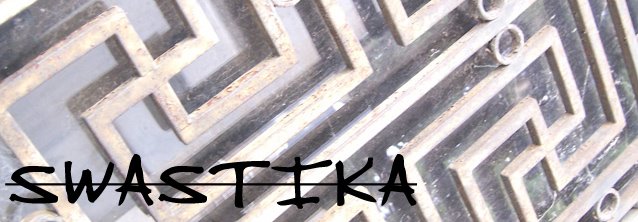Swastika Nayarit
Mexico, Nayarit, San Pedro Lagunillas region, 200 B.C. – A.D. 300
Earthenware with colored slips and resist decoration
The West Mexican states of Colima, Nayarit and Jalisco were the home of an important early ceramic sculptural tradition. Some settlements in the region had a large, circular plaza with a ceremonial platform mound in the center. On rectangular platforms around the plaza were structures with high, thatched roofs. Ceramic sculptures show that music, dance, ceremonies and feasts took place in the plazas. Some sites also had ball courts – a version of the ancient game is still played in West Mexico today. Deep tombs dug near the plaza were used by multiple generations of families, who buried the dead with offerings of food, drink, shell ornaments, and ceramic vessels and figures.
Figures from the San Pedro Lagunillas region of Nayarit were once called “Chinesco” because their faces were thought to look Chinese. This woman has a large head, broad, heavy body, and slender arms. Her pose and facial expression are still and serene; the hands resting on the slightly rounded belly may indicate pregnancy. She is simply dressed, wearing only a skirt and nose ring, but her arms, torso and face are enhanced with painted patterns.
Foto Alicia Cardenas
Subscribe to:
Post Comments (Atom)


No comments:
Post a Comment